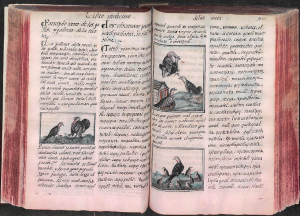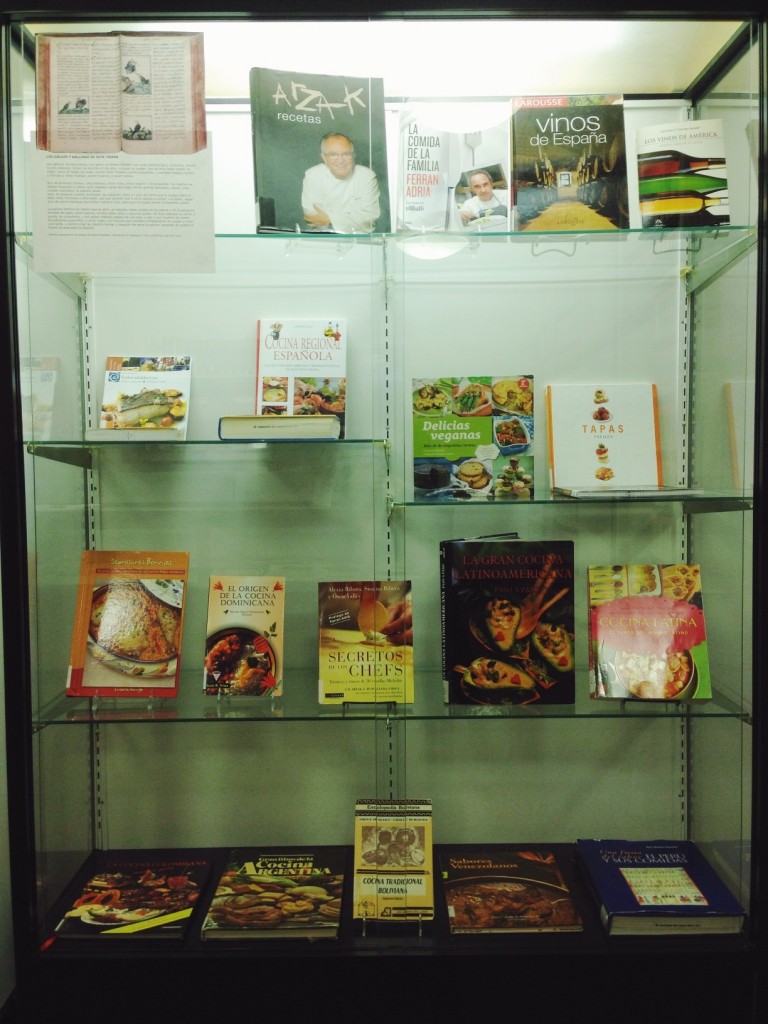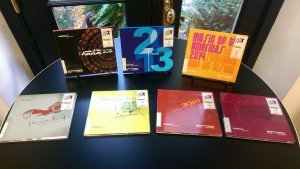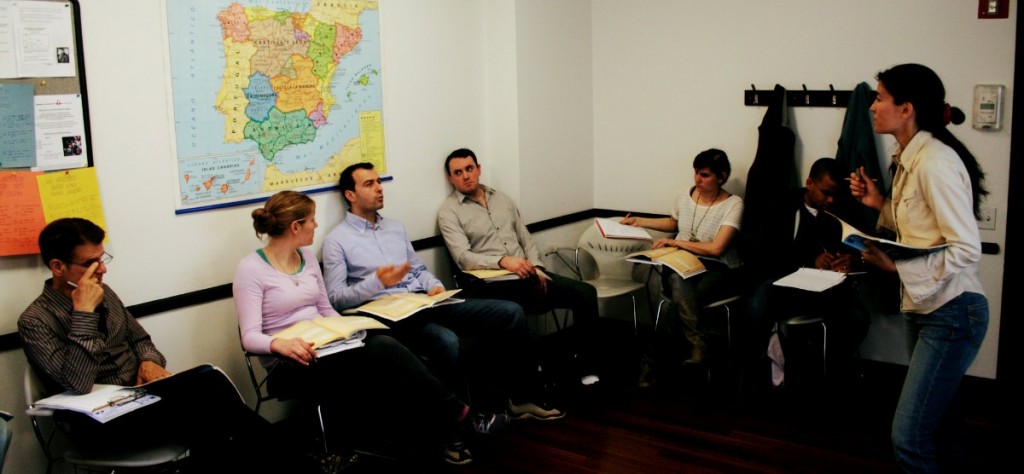El español es un idioma, no veintidós / Spanish is one language, not twenty-two
Muchos estudiantes de español en Estados Unidos suelen preguntar cuál es el mejor español que deben aprender, como si existiesen mejores y peores versiones del idioma. Las buenas noticias para estos estudiantes es que el español es un solo idioma, y no veintidós (el número de países donde el español es el idioma oficial).
Al igual que el inglés, el español se habla en varios países. Y, tal como ocurre con el inglés, existen variantes locales. Sin embargo, las diferencias entre estas variantes no son tan importantes como para considerarlas dialectos.
Del mismo modo quIe un estadounidense entiende perfectamente a un australiano o a un británico, pero no habla igual que ellos, un hispanohablante entiende a todos los demás. Cada país hispanohablante tiene su propia variante del idioma, pero en general estas variantes tienen más similitudes que diferencias.
Pero más a menudo de lo deseable nos encontramos con escuelas o herramientas de aprendizaje en línea que ofrecen cursos de español diferenciados bajo los nombre de “español de España” y “español de América Latina”. Incluso es fácil encontrar esta distinción en procesadores de texto muy populares que todos utilizamos rutinariamente. Pues bien, esta diferenciación es, como mucho, una media verdad.
Como es bien sabido, América Latina no es un país, sin muchos (concretamente son 19 los que hablan español), y en cada uno de ellos podemos encontrar diferencias en su habla (Argentina, México, Colombia, etc., cada uno tiene su particular variante). Lo mismo sucede con algunas variantes del inglés en Estados Unidos y eso no significa que sean diferentes dialectos o que una sea mejor que otra.
En segundo lugar, la pronunciación del español es muy consistente. Más incluso que la del inglés. ¿Sorprendidos? Lo cierto es que entre regiones hispanohablantes hay menos diferencias que entre regiones anglohablantes. Las diferencias más destacadas en pronunciación son las ya conocidas por todos: la pronunciación de la “z” y la “c” en ciertas partes de España, que en América Latina se pronuncian como una “s”.
No obstante, es justo destacar que también existen algunas diferencias más importantes. Especialmente en vocabulario. Algunas palabras tienen significados diferentes en diferentes regiones, no sólo es un tema de España y América Latina.
Otro asunto diferenciador es el uso de la conjugación del “vosotros”, que se usa en España pero no en América Latina, donde usan “ustedes”. Pero la realidad es que está diferencia se ha magnificado demasiado. La experiencia del Instituto Cervantes indica que los estudiantes no tienen ningún problema para aprender ambas formas.
En conclusión: no importa qué variante del español se estudie, ya que al final será la herramienta perfecta para comunicarse con los hispanohablantes de todo el mundo. Porque el español, como cualquier otra lengua, es esencialmente una herramienta extremadamente flexible para entendernos los unos a los otros sin importar nuestra nacionalidad o cultura.
————————————————————————————————————————————————————————–
At some point, many students of Spanish in the US have asked the question above and wondered whether the Spanish they have heard is the “real” Spanish or just a dialect. Well, we have good news for you: Spanish is one language, not twenty two (the number of countries where Spanish is an official language).
Like English, Spanish is spoken in many different countries. And just as it happens with English, there are local variants – though the differences are not so great that they become different dialects.
If you are from the United States, you can understand an Australian or a British person, right? But you don’t speak like them. The same happens with Spanish. Each Spanish-speaking nation speaks its own variety of Spanish, but overall they have more similarities than differences.
More often than it should be, you probably have come across some language schools or online tools in the US offering differentiated Spanish courses under «Spanish (Spain)» and «Spanish (Latin America)». You can even find this differentiation in very famous word processors, for example. Well, at most, this is a half-truth.
Firstly, as you well know, the Spanish speaking Latin America is not one country but nineteen, and you can find differences between them in the same way that you can notice different English variants between states in the US.
And secondly, Spanish pronunciation is pretty consistent, much more than the pronunciation of English. That is, the differences in pronunciation, from region to region, are less for Spanish than they are for English. Surprised? The most noticeable difference regarding pronunciation in Spain as compared to Latin America is the pronunciation of the letters «z» and «c» – which in Latin America are pronounced like the letter «s» but in Spain are pronounced like «th». For the majority of students this difference is minor and of little consequence.
However, it is fair to say that there are also bigger variations, especially in vocabulary. Certain words carry different meanings in different areas. Not just Spain vs. Latin America, but region to region. The same is true regarding certain expressions; some are used in some regions, and others are used in different regions.
Another issue is the «vosotros» conjugation, which is used in Spain, but not in Latin America, where they use “ustedes”. The reality is that too much is made out of this issue. The experience at Instituto Cervantes says that students understand easily both forms.
The Bottom Line
No matter which variant of Spanish a student learns, at the end of the day it’s going to be the perfect tool to communicate with Spanish speakers all over the world. Because Spanish as any other language is just a tool, a very flexible tool, to understand each other regardless of nationality or background.
¡Feliz Día de Acción de Gracias! / Happy Thanksgiving!

LOS GALLOS Y GALLINAS DE ESTA TIERRA
Las gallinas de esta tierra y los gallos se llaman totollin. Son aves domésticas y conocidas, tienen la cola redonda, tienen las plumas en las alas, aunque no vuelan; son de muy buen comer, la mejor carne de todas las aves; comen maíz mojado cuando pequeñas, y también bledos cocidos y molidos y otras hierbas; ponen huevos, y sacan pollos.
Son de diversos colores; unos blancos, otros rojos, otros negros y otros pardos; los machos se llaman huexolotl y tienen gran papada y gran pechuga, tienen grande pescuezo, tienen unos corales colorados; la cabeza tienen azul, en especial cuando se enojan, es cejijunto, tiene un pico de carne que le cuelga sobre el pico; bufa, hínchase o enerízase. Los que quieren mal a otros danlos a comer, o a beber, aquel pico de carne blandujo que tienen sobre el pico, para que no pueda armar el miembro gentil.
La gallina hembra es menor que el gallo, es bajuela, tiene corales en la cabeza y en la garganta; tómase del gallo, pone huevos, échase sobre ellos y saca sus pollos. Es muy sabrosa su carne, y gorda, es corpulenta, y sus pollos mételos debajo de sus alas, y dan a sus hijuelos de comer buscándoles gusanillos, y otras cosas. Los huevos que concibe primeramente se cuajan y crían una telita, y dentro crían su cáscara tierna, y después les pone la gallina; después de puesto el huevo se endurece la cáscara.
Historia general de las cosas de Nueva España / Bernardo de Sahagun. Libro undécimo; parrafo nono

Donación de Americas Society

Americas Society (AS) ha donado la colección Music of the Americas a la Biblioteca Jorge Luis Borges. Estos discos actualizan nuestra fonoteca y están disponibles en préstamo para socios del Instituto Cervantes Nueva York.
AS es el principal foro dedicado a la educación, el debate y el diálogo en las Américas.
Music of the Americas contribuye a la misión de la AS con encuentros de músicos y público, creando diálogos a través del común amor por la música y ofreciéndonos la oportunidad de conocer música distinta y significativa.
Americas Society has generously donated the Music of the Americas CD collection to our library. These recordings form part of our library collection of over 85,000 titles available for loan to all Instituto Cervantes New York members.
Music of the Americas seeks to further Americas Society’s mission by engaging artists and concertgoers alike in meaningful dialogue through a shared love of excellent music. The series aims to present artists that are both superb musicians in their own right and cultural ambassadors of myriad social and musical traditions, creating a vibrant space and a unique opportunity to hear distinctive and significant music.
AS Is the premier forum dedicated to education, debate, and dialogue in the Americas. Its mission is to foster an understanding of the contemporary political, social, and economic issues confronting Latin America, the Caribbean, and Canada, and to increase public awareness and appreciation of the diverse cultural heritage of the Americas and the importance of the inter-American relationship.
Cómo disfrutar del invierno en Nueva York / How to enjoy winter in New York
Ahora que el invierno se acerca para convertir a Nueva York en una ciudad menos acogedora, es el momento de encontrar rincones y actividades que nos resguarden del frío y la nieve, que nos den el calor necesario para el cuerpo y la mente, y que nos ayuden a sobrellevar con cierta alegría estos meses de días cortos y luz débil. Os presentamos siete cosas imprescindibles para atravesar el invierno e incluso convertirlo en una estación acogedora. Y todas están en el Instituto Cervantes.
Winter is coming and is about to turn New York into a less welcoming city. It’s time to find places and activities to get away from the cold weather, things that provide the necessary warmth for the body and for the mind. Things, basically, that help us to get through these months with less daylight. Here you have some essential things to help you transform winter into a much more warmer season. And they are all happening at Instituto Cervantes New York.
1-Un café o un té bien caliente / A hot cup of coffee or tea
2-Un buen vino / A good wine
Apúntate a una de nuestras catas de vino en el Instituto Cervantes y saca el enófilo que hay dentro de ti.
Sign up for a wine tasting at Instituto Cervantes and become the oenophile you always knew you could be.
3-Ir al cine / Going to the movies
Mira nuestra agenda cultural y descubre el cine español y de América Latina, interesentes conferencias, conciertos y mucho más.
Check out our cultural program and discover the new cinema from Spanish speaking world, interesting round tables, concerts and much more.
4-Un buen libro / A good book
Con más de 80.000 libros, la biblioteca Jorge Luis Borges es uno de los mejores archivos en español de Nueva York.
With more than 80.000 titles, the Jorge Luis Borges library at Instituto Cervantes is one of the best Spanish archives in New York City.
5-Buena compañía / Good company
Las clases de español en el Instituto Cervantes son divertidas, provechosas y exahustivas. Si tu objetivo este invierno es aprender español en la mejor de las compañías, aquí te esperamos.
The Spanish classes at Instituto Cervantes are fun, helpful and comprehensive. If your goal is to learn Spanish this winter, why not doing it at the best place to learn Spanish in New York with the best company you can get -students like yourself.
¿Estás preparado ahora para el invierno?
Are you now ready for winter?
Boletín de novedades de la Biblioteca Electrónica del Instituto Cervantes / New arrivals newsletter for the Instituto Cervantes Electronic Library

Consulta el boletín de novedades de la Biblioteca Electrónica del Instituto Cervantes: literatura española e hispanoamericana, crítica literaria, ELE, audiolibros … http://ow.ly/CuvcG
Si deseas obtener el carné de nuestra biblioteca-e puedes solicitarlo rellenando el siguiente formulario http://goo.gl/NF7yB1
Take a look at our new arrivals newsletter for the Instituto Cervantes Electronic Library collection. You will find Spanish and Latin American literature, literary criticism, ELE, and audiobooks …http://ow.ly/CuvcG
If you would like a membership card for our Digital Library you can apply for one at the following link. http://goo.gl/NF7yB1







